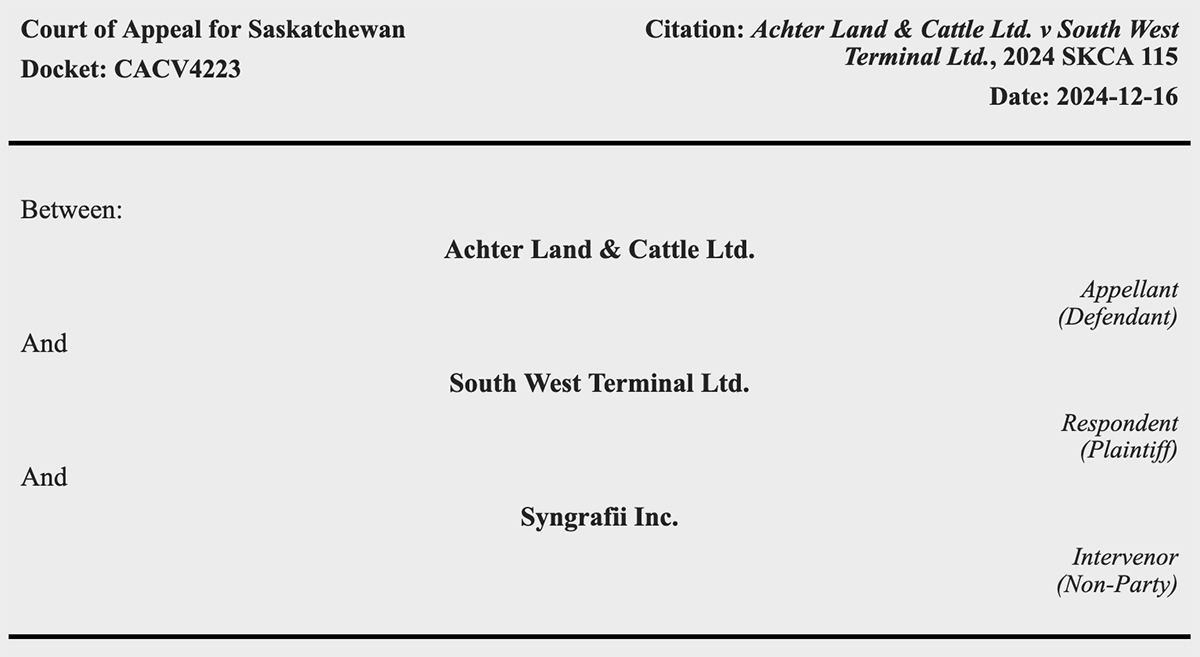Contractual arrangements entered into through text message, email or other seemingly casual electronic correspondence can be legally binding and enforceable, depending on the circumstances.
On Dec. 16, 2024, a majority of the Saskatchewan Court of Appeal denied a grain seller’s appeal, which would have overturned a finding that a thumbs-up emoji constitutes acceptance of a contract.
Chief Justice Leurer wrote the reasons for the majority, with justice Barrington-Foote writing a dissenting opinion.
Read Also

Farm auctions evolve with the times
Times have changed. The number of live, on-farm auctions is seeing a drastic decline in recent years. Today’s younger farmers may actually never experience going to one.
The court considered whether a King’s Bench judge erred in finding that the parties had entered into a contract and whether the requirements set out in the Sales of Goods Act (SGA) for the enforceability of the contract had been met.
The majority ultimately determined that no error had been made by the King’s Bench judge.
The facts
After discussing and agreeing to a flax contract over the phone, a representative for a grain buyer texted the representative for the seller a photo of the flax contract, along with the text message: “Please confirm flax contract.”
The seller’s representative texted back a thumbs-up emoji, which the buyer understood as the seller’s acceptance of the contract. By the time delivery was due, the price of flax had increased exponentially, and the seller failed to deliver.
Prior to the dispute, the parties had a longstanding business relationship. They had previously entered into several similar contracts in a similar manner, with a photo of the contract being texted to the seller, which would then be accepted via text message.

The seller had always accepted those contracts by text message using short affirmative phrases such as “looks good,” “OK” and “yup.”
Accepting a contract
A contract is formed when an offer by one party is accepted by the other with the intention of creating a legal relationship and supported by some exchange of value or a promise to exchange something of value.
The court accepted that these basic legal principles were properly applied by the judge when he analyzed the evidence to conclude that a contract was formed. There was no error in his approach.
However, the court was careful to specify that a text message will not always constitute acceptance of a contract. Courts must engage in a contextual analysis to determine whether an objective, reasonable bystander would conclude that the parties had entered into a contractual agreement, which is what the judge had done in this case.
The SGA requires that a contract be evidenced by some note or memorandum in writing to be enforceable in the courts.
Noting Section 8 of the Electronic Information and Documents Act, which provides that records in electronic form meet the in-writing requirements at law, the court held that the judge did not err by determining that a text message conversation met the requirements of being “in writing.”
The principle issue on appeal was whether the “note or memorandum in writing” evidencing the contract was “signed by the party to be charged,” as is required by the SGA.
When analyzing this issue, the majority noted that little is to be gained by fixating on the idea that a signature is synonymous with a handwritten name.
The case law interpreting the signature requirement under the SGA takes a purposive approach to interpreting the signing requirement to prevent the section, which is intended to prevent fraud, from becoming an instrument for parties to avoid their legitimate obligations.
The fundamental purpose of a signature is to link the person to the document and evidence their intention to be bound by the document.
In this case, the majority accepted that the judge properly identified that the thumbs-up emoji, coupled with the metadata identifying the sender of the message, met both fundamental purposes of a signature.
It identified the party and confirmed its assent to the contract. Thus, the text message, in the specific context of this case, met the signature requirements set out in Section 6 of the SGA.
Kristél Kriel is a partner with MLT Aikins LLP and Michael W. Marschal is an associate with MLT Aikins LLP. If you have a topic or question you would like us to address in future issues, please email kkriel@mltaikins.com.















